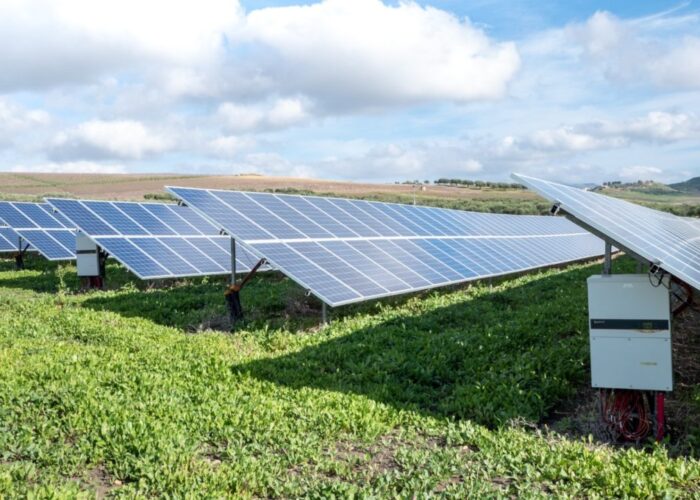A new analysis from iSuppli forecasts that the price of polysilicon will begin a “precipitous plunge in 2009 after peaking this year,” as the supply of the raw material exceeds demand. At fault, according to the research firm, are “fundamental imbalances in the solar supply chain.”
The 27-page report, “Immature Photovoltaic Supply Chain to Result in Major Polysilicon Price Volatility,” says that the global poly supply will likely double in 2009, while demand will increase by only 34%. Although poly demand will continue to exceed supply in aggregate next year, the sharp increase in supply will cause poly pricing to fall.
Unlock unlimited access for 12 whole months of distinctive global analysis
Photovoltaics International is now included.
- Regular insight and analysis of the industry’s biggest developments
- In-depth interviews with the industry’s leading figures
- Unlimited digital access to the PV Tech Power journal catalogue
- Unlimited digital access to the Photovoltaics International journal catalogue
- Access to more than 1,000 technical papers
- Discounts on Solar Media’s portfolio of events, in-person and virtual
After peaking at as high as $500 per kilogram this year and suppliers largely dictating terms to customers during a three-year price rise, the report sees the average spot market price for poly dropping next year to as low as $200 per kilogram.
The price declines won’t stop there, according to iSuppli. As new companies enter the poly market, supply will outstrip even aggregate demand starting in the beginning of 2010, causing prices to fall further, with spot market pricing decreasing to as low as $100 per kilogram, according to iSuppli.
“The dramatic variance in the ramp-up rates of the polysilicon suppliers and their PV-cell customers will lead to major supply-chain imbalances,” said Henning Wicht, senior director and principal analyst, photovoltaics. “The PV supply chain is immature and inflexible, which will result in significant supply chain instability and waste.
“iSuppli estimates that more than 90% of the existing PV supply chain is characterized by fixed supply agreements that are incapable of adjusting to actual changes in end-demand.
“Supply and demand will not be able to maintain balance at the various nodes in the supply chain for any length of time, resulting in substantial swings in inventory and pricing over the next two years, at which point polysilicon supply will exceed demand so much that all contracts and sales channels will need to be redefined,” he noted.
In 2007, more than 90% of polysilicon was supplied by seven companies: Hemlock, Wacker, REC, Tokuyama, MEMC, Mitsubishi, and Sumitomo. However, more than 60 other firms have said they plan to manufacture poly by 2009, resulting in what iSuppli sees as a plethora of supply-and-demand imbalances at the company-to-supplier level.
The increasing difficulties in the solar PV supply chain are happening when the market is growing rapidly. Wafer-based solar cell operational production capacity will increase from 6.2 GW in 2007 to 17.8 GW in 2010 and 27.5 GW in 2012, iSuppli predicts. However, polysilicon production will rise even more rapidly, with production equivalent to 5.7 GW in 2008, to 19.4 GW in 2010 and to 37.6 GW in 2012.
All of these factors could lead to a shakeup in the solar wafer market. Poly’s lower price and expected oversupply will benefit PV wafer makers that buy the raw materials, but will make the wafer segment market a less attractive business in the future and one that will go through consolidation after 2012, when and if poly prices completely collapse, according to iSuppli.
“The pure wafer business is a siren’s call,” Wicht believes. “The wafer business today is driven by profitability that results from the disposing of scarce supplies of polysilicon.
“In reality, producing a wafer is not technically beyond the capability of either the polysilicon suppliers or the cell producer. Eventually, then, both polysilicon and cell producers will try to drain all the profit out of this level of the supply chain,” he concludes.
In addition to the market update/outlook and global demand-supply balance analyses, the report examines two key trends in the sector: first, thinner and thinner wafers–what it calls “a strategic element of competitiveness” for substrate and cell makers; and second, the recycling of the kerf loss that comes from wire sawing wafers out of ingots, the “black hole in the solar silicon business.”
For an abstract of the report, including a chart showing the polysilicon supply-demand balance and other factors, click here.







